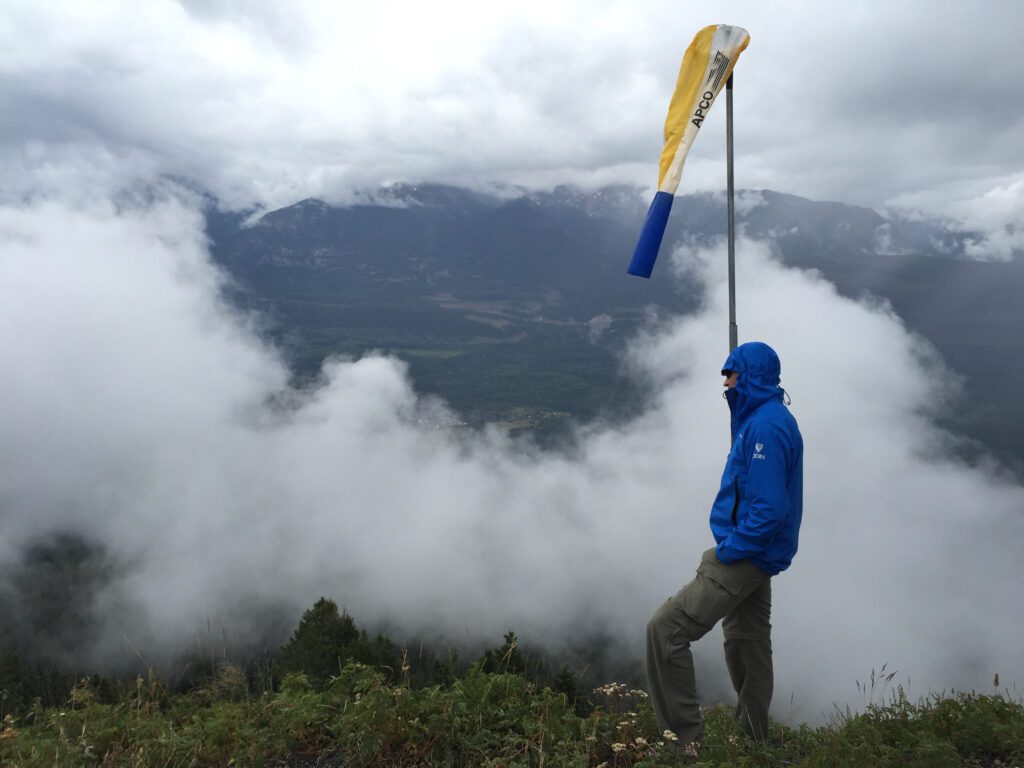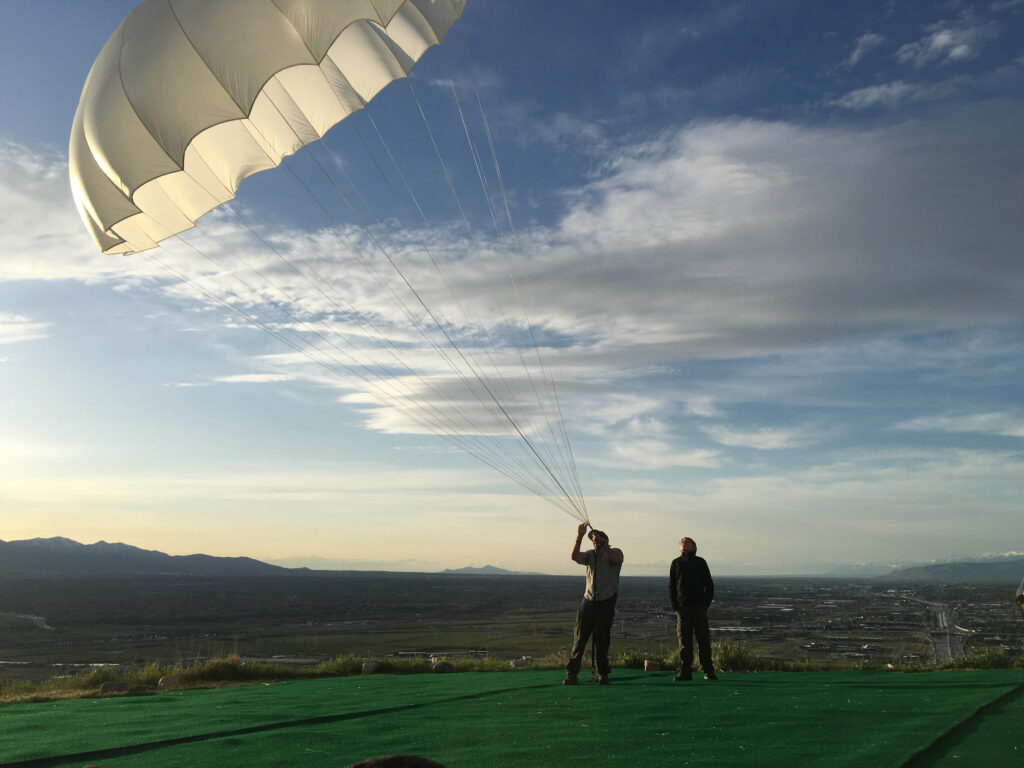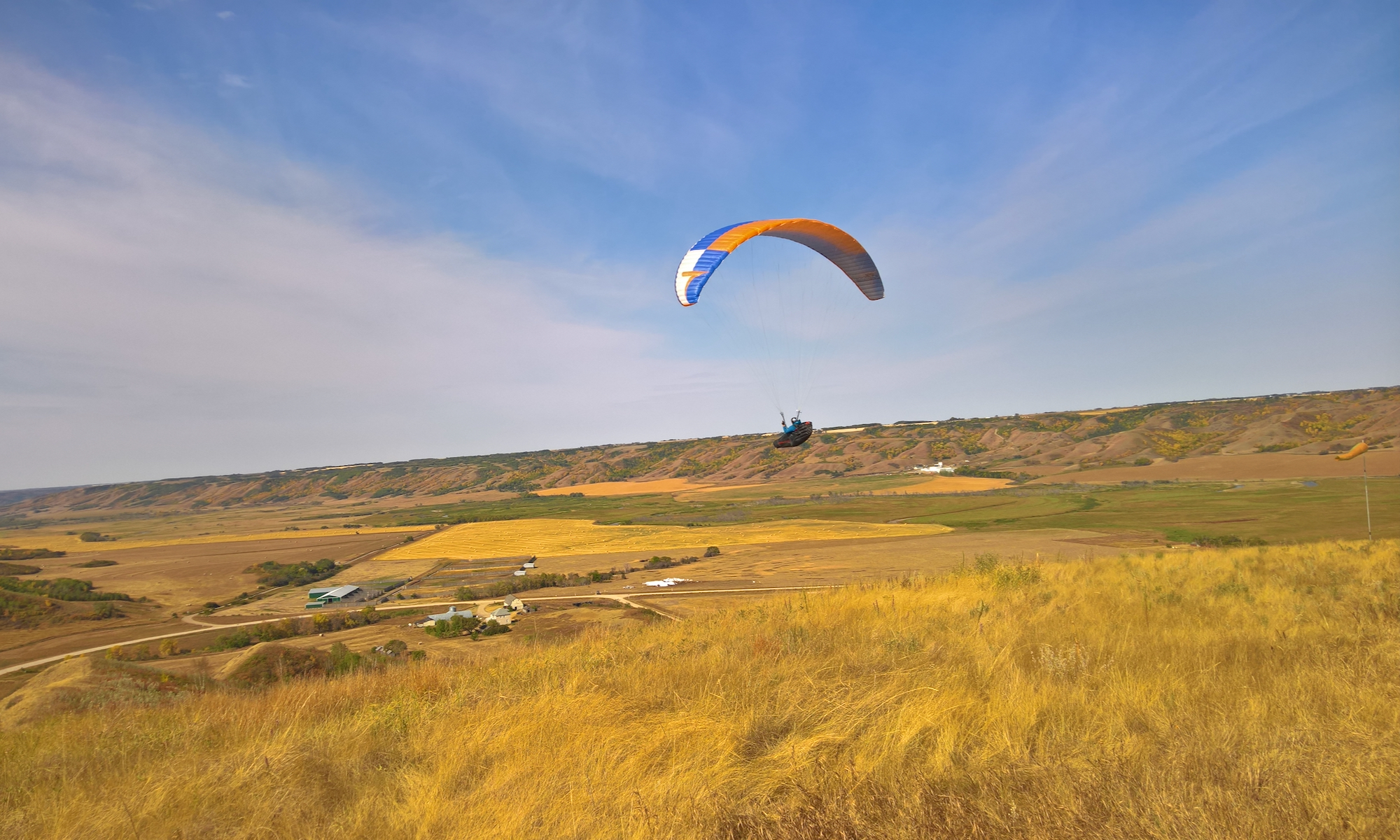But, is it safe?
Paragliding pilots are often asked if paragliding is safe. The answers is somewhat more complex than a simple “Yes/No”. Paragliding is a form of aviation, and carries the inherent risks of aviation; that is that humans lack the ability to fly unaided. As pilots, instructors, and a free flight community, we take certain steps to mitigate risks.
1. We have a training program which teaches the required skills to safely launch, land, and fly
The first step in safe flying is receiving the correct training. The Hang Gliding and Paragliding Association of Canada (HPAC) provides a curriculum and sets the standards for skills needed at each pilot rating level. Additionally, established flying sites will often have a minimum recommended rating. The minimum rating ensures that pilots have the skills needed to fly on their own, and also they have an understanding of the technical requirements of different sites.
2. We limit our flying to only wind/weather conditions that are appropriate to our aircraft
Paragliders are slow and deformable wings. The second step in safety is for pilots to use their training to assess conditions at any launch and determine they are safe and appropriate for them to fly in. The safety of conditions depends on multiple factors about the site, the pilot’s skill level, and the equipment they are using.

3. We select and fly with equipment that is appropriate to our skill level
Paragliding equipment is not all the same. There are 5 ratings of equipment ENA, ENB, ENC, END, and CCC (also known as EN ratings, which are specified by the EU). These ratings are determined through testing under controlled conditions by independent test labs. In general the EN rating indicates how quickly and extremely a wing reacts in adverse conditions, with ENA being the most benign and CCC being the most aggressive. This reaction can be mitigated and prevented by pilot skill, with higher performance wings requiring more skill. Most beginners will fly an ENA or ENB wing. END and CCC wings are generally only used by the top pilots in competition races.
4. We take periodic safety training to expose ourselves to adverse flight behaviours and learn the techniques to correct them
Special courses, called SIV (“Simulation d’Incidents en Vol”), have the pilot induce adverse conditions in a safe environment: over water, in radio contact with an experience instructor, often with an additional reserve parachute. This allows the pilot to experience the behaviour of their equipment and learn the skills needed to correct and manage these incidents.
5. We fly with an emergency reserve parachute

In almost all cases paraglider pilots fly with an emergency reserve parachute which can be deployed if an incident occurs with the main wing that cannot be corrected. This is an extra layer of security if all of the above fail.
However since we cannot see the motion of air or disturbances in the air, hazards can exist which cannot be completely mitigated. Paragliding accidents can occur. We believe it’s important for all pilots to understand this.
